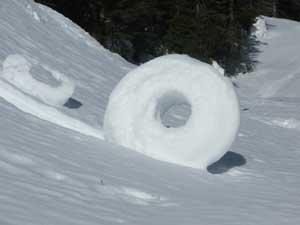
I've had my fair share of changes in life—moves, changing schools, foreign exchanges, etc.—and as such have had a lot of opportunities to meet new people. In general, I like this; I like the opportunity to start fresh, to leave behind the parts of myself I didn't like, to reinvent myself if I so choose.
But the hardest thing about a new environment is making new friends. It always kind of amazed me that a newcomer could make friends at all; where do other people find the space in their lives to make room for you? But that's a thought for another day. Today I'm sharing with you the result of 25 years of de facto research in displacement and acclimation, which can be summed up in The Six Month Rule:
It takes ~6 months to start making (significant) friends in a new place.
If you want to go ahead and prove me wrong, to show how cool and sociable you are because you make friends in two weeks, good for you. But it's been my repeated experience that it takes about six months to really start connecting with people—showing them your personality, learning about theirs, sharing more than passing experiences with each other. There's often the one or two individuals that you meet early on, because they have something obviously in common with you (the girl who just moved here at the same time you did, the only other person who shares your native language, etc.); but for things to really start coming together on a larger scale, I've found it always takes about six months.
I started developing this theory in high school, after 1) starting at a new magnet school, 2) transferring to the neighborhood school, 3) starting high school, and 4) moving to England, all within a few years; and it's eerie how accurate it has proven itself. Last Wednesday marked six months that I've been working at Google, and in the past few weeks I've really felt like my life in WA and at Google has coalesced into something more interesting and less empty than what it's been since we moved here.
I now have friends at work. I find it easier to make small-talk with people (one of the things I hate about being new is trying to force yourself to spend time with people you don't know (in order to make friends) and with whom you have no common ground, so you end up talking about vapid and uninteresting things). I have interesting conversations on IM with my coworkers throughout the day. I now have more lunch engagements than I have time for, and I can't remember the last time I ate alone (I used to eat alone every single day). I'm making friends in roller derby, getting to know people and also getting more exercise than I've gotten for years (it's exciting to be actively making this change in my life that I've often "promised" myself, but never really followed through on!). I've been attending yoga classes and talking to people at the studio. And I'm co-founding an a cappella group at our office. How did this all happen!?
Mark my words, it's The Six Month Rule...


